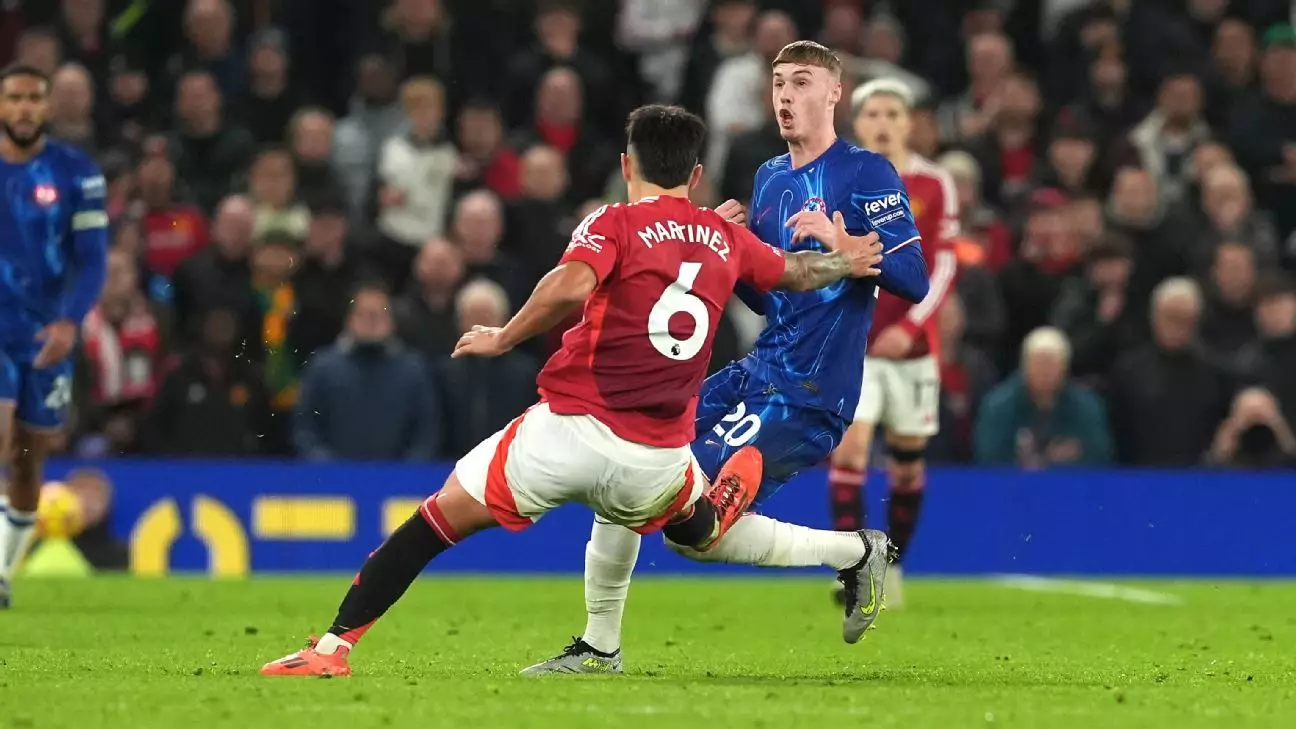The introduction of Video Assistant Referee (VAR) technology into football, especially in the high-profile environment of the Premier League, has been met with a mixture of anticipation and skepticism. Each week, VAR finds itself in the spotlight, deliberating on contentious plays, and in turn, stirring debates among players, fans, and analysts alike. The core inquiry surrounding VAR often centers on its decision-making processes and the adequacy of its verdicts. This article examines several controversial incidents from recent Premier League matches, scrutinizing the intricacies of the VAR protocol and the broader implications of officiating in top-flight football.
One noteworthy moment occurred during a match involving Manchester United and Chelsea, where Lisandro Martínez’s challenge on Cole Palmer ignited fervent discussions about the appropriateness of his punishment. In the dying minutes of the game, Martínez impeded Palmer with an apparent high challenge that possibly endangered the opponent’s safety. While referee Rob Jones awarded a yellow card, the VAR, overseen by Michael Salisbury, was summoned to check for a potential red card due to the nature of the foul. Ultimately, VAR deemed the on-field decision sufficient, and no red card was issued.
This decision raises a critical question about the consistency of officiating standards in the Premier League. Last season’s statistics indicated that VAR intervention in red card scenarios for serious foul play had a success rate of only 62.5%. Such figures imply that subjective interpretations of fouls can vary widely, creating an environment of uncertainty for both players and supporters. The high bar for VAR intervention often leaves room for potentially dangerous fouls to be overlooked, as was the case with Martínez. His challenge might not have shown excessive force, but high contact with studs warrants stricter scrutiny to ensure the safety of players on the pitch.
Another pivotal moment saw Manchester United awarded a penalty when goalkeeper Robert Sánchez tangled with young striker Rasmus Højlund. Upon VAR review, it was determined that contact warranted a penalty, and Bruno Fernandes converted. This instance reflects a contrasting application of VAR compared to the previous controversial call. When a clear foul transpires, the VAR tends to uphold the on-field decision without hesitation, especially if the attacking player was first to touch the ball. Consistency in these judgments is crucial; however, it often appears there is a tacit agreement that incidents involving goalkeepers favour the attacking team, often leading to penalties being less rigorously contested.
Ipswich Town’s foray into the Premier League has been underscored by frustration regarding VAR decisions. A potential penalty during their match against an opponent became a focal point of debate after referee Tim Robinson did not penalize a collision involving Ipswich’s Conor Chaplin. The club’s CEO expressed discontent, characterizing VAR oversight as systematically disadvantageous to Ipswich. For a club situated at the lower echelons of the table, reliance on VAR for crucial calls can exacerbate feelings of injustice, especially when subjective incidents seem to favour competitors. The phenomenon of teams feeling victimized by VAR brings to light the role of technology in perpetuating competitive disparities.
What complicates matters further is the fact that the Premier League remains committed to a high threshold for any VAR intervention. As Ipswich has been on the receiving end of several contentious decisions this season, the club’s legitimate grievances rise against a backdrop of seemingly varied interpretations of similar situations across different matches. This inconsistency undermines the credibility of VAR and begs the question of whether any framework can create truly objective adjudication in inherently subjective situations.
In another dramatic event, Crystal Palace thought they scored a last-minute winner only for the goal to be disallowed as the goalkeeper was deemed to be in control of the ball. The referee’s call, backed by VAR, hinged on the interpretation of the goalkeeper’s possession—a critical yet often contentious area of officiating. Instances where a goalkeeper appears closely contested can result in harsh penalties for attacking teams under the pretext of protecting the keeper. While the rationale behind protecting goalies is understandable, the execution through VAR must balance this with fair goal-scoring opportunities for attacking players, a balance that the current system fails to consistently achieve.
The ongoing saga of VAR in the Premier League has unveiled various layers of complexity in officiating. As we delve deeper into the functions of VAR and the recounted incidents, several questions arise about the objective measurement of subjective actions on the pitch. Each match and VAR intervention adds to the narrative of this evolving technology as a necessary but flawed aspect of modern football. The challenge lies not only in refining the technology and protocols but also in creating a more transparent system that ensures equitable treatment of all teams irrespective of their standings. The path forward must demand a commitment to evolving both VAR technology and the officiating standards that govern its use, ensuring that football remains a contest defined by fair play and authentic competition.

